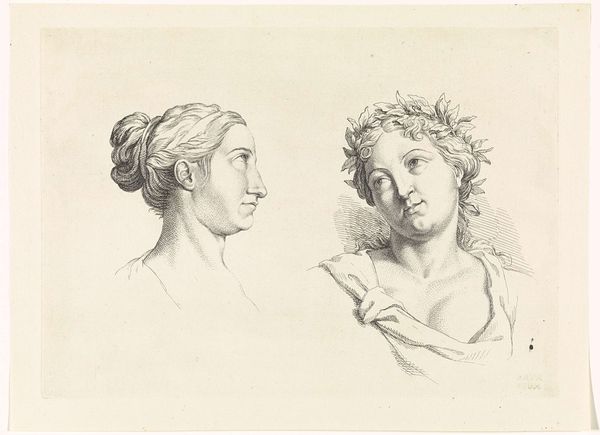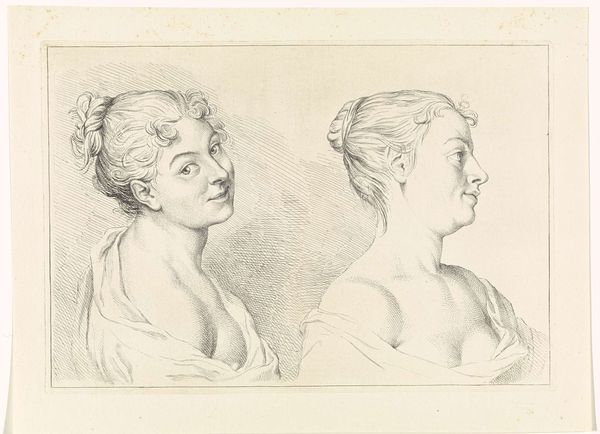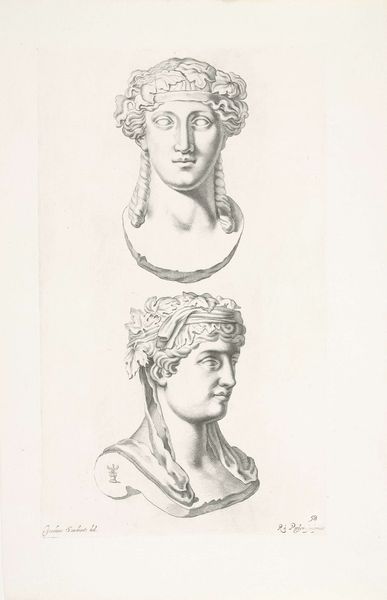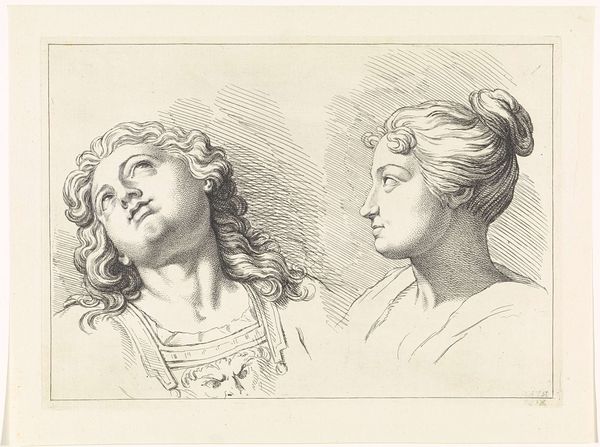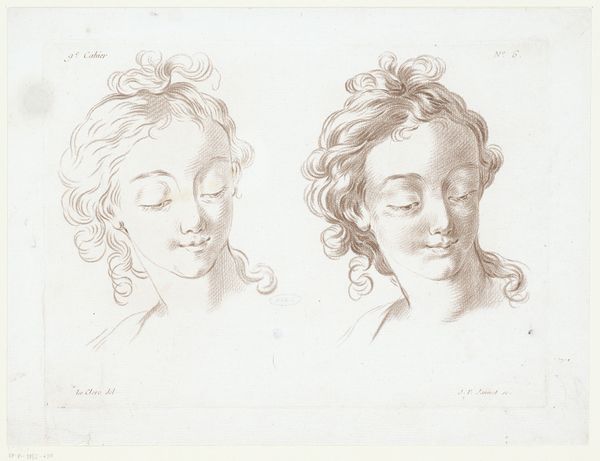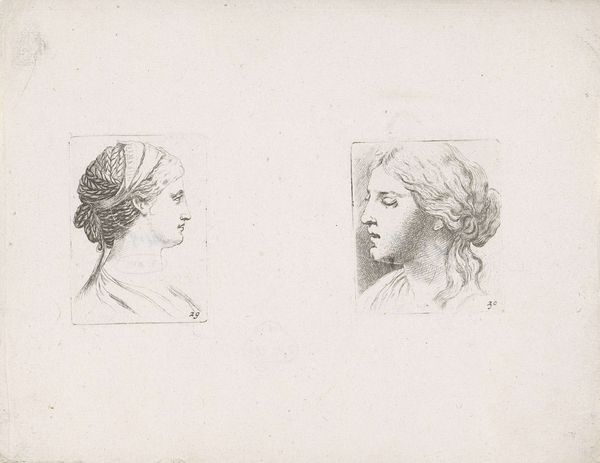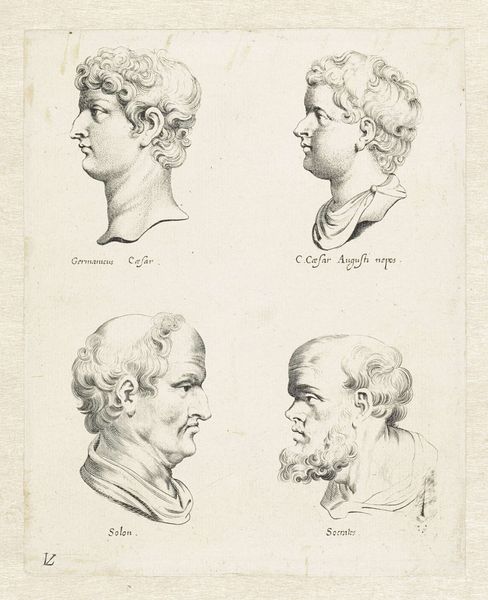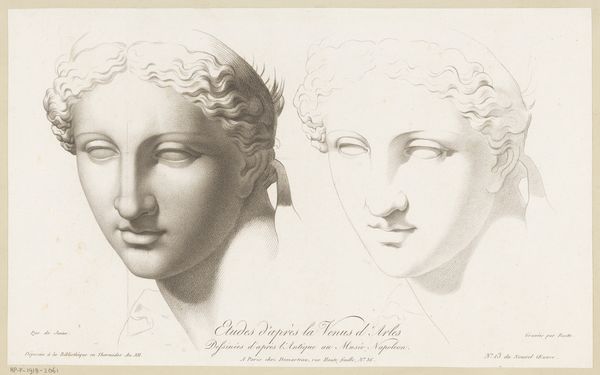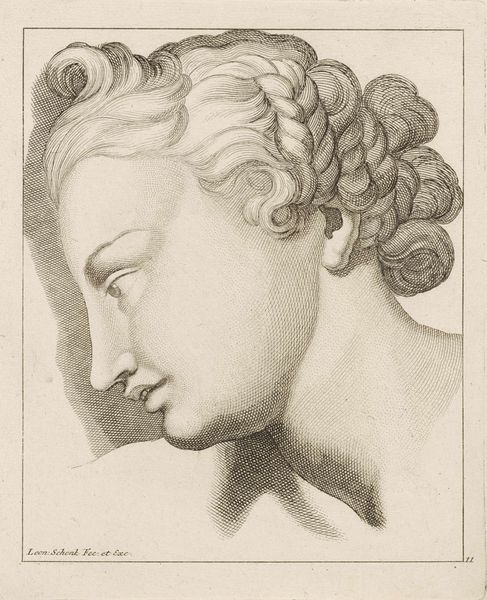
drawing
#
portrait
#
pencil drawn
#
drawing
#
facial expression drawing
#
light pencil work
#
baroque
#
pencil sketch
#
figuration
#
portrait reference
#
pencil drawing
#
line
#
animal drawing portrait
#
portrait drawing
#
pencil work
#
fine art portrait
Dimensions: height 210 mm, width 302 mm
Copyright: Rijks Museum: Open Domain
Curator: Before us, we have "Studies van twee vrouwenhoofden, met gevlochten haren," a drawing by Bernard Picart, likely created sometime between 1683 and 1733. Editor: There’s an immediate serenity in the delicate lines of this drawing, a gentleness that the artist has skillfully rendered in pencil. Two studies of women’s heads are side by side; their hairstyles immediately capture attention. Curator: Absolutely. Considering the period, the meticulous detail given to their elaborate braided hairstyles isn’t merely aesthetic. These hairstyles signified social standing and adherence to certain cultural norms of the time. Picart was quite interested in class representation. Editor: It strikes me, though, how different their expressions are. The woman on the left gazes outward with a slightly pensive look, while the other looks up with this distinct sense of hope or curiosity. I'm fascinated by the duality present even with what seems like a technical study. It goes beyond mere form. Curator: That contrast speaks to Picart’s awareness of his subjects, even in preparatory drawings. Although largely an engraver of other people’s artworks, in drawings like these one senses the interest Picart has with exploring emotional nuance alongside mere physiognomy. The fact that they are together encourages the eye to draw links between the subjects as well as individual meanings. Editor: The interwoven braids have such a classical, almost allegorical quality, reminiscent of classical sculptures that sought to idealize female beauty and virtue, so I feel like the symmetry in design is what adds gravity. The light pencil work even contributes a tactile aspect – as if you could feel the fineness of their hair. Curator: And the accessibility of drawing itself shouldn’t be dismissed. It suggests an immediacy in artistic creation that the Baroque period—with its grand public artworks—often obscured. Picart offers us something more personal and direct through it. Editor: That’s very true. It makes us really think about what these symbols and depictions represented then and how they resonate even today. Curator: Indeed, something so seemingly simple on the surface provides so much more upon closer consideration.
Comments
No comments
Be the first to comment and join the conversation on the ultimate creative platform.
